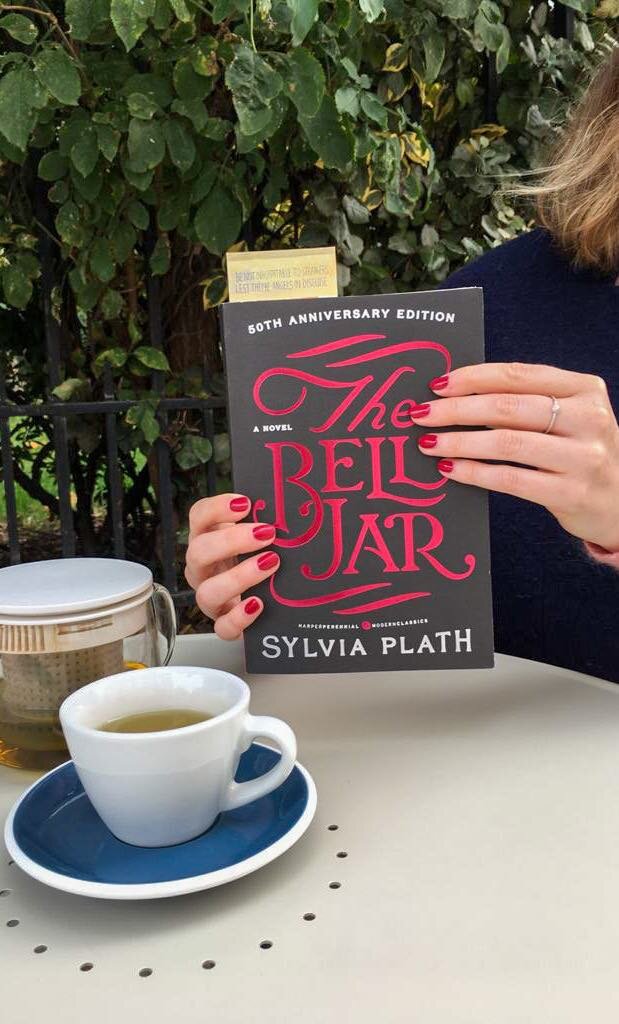Book Review: The Bell Jar by Sylvia Plath
Content Warning: Depression. Suicide.
The book with the most community votes for October’s discussion was The Bell Jar, by American poet and writer Sylvia Plath. This roman à clé was first published in 1963 in the U.K. under the pseudonym Victoria Lucas, just one month ahead of Plath's death by suicide. The book wouldn't be published in the U.S. until 1971, by which time the writer was a household name (posthumously) and confessional literature was all the rage.
Admittedly late to the Plath party, this was my first time reading a book that is commonly referred to as a seminal feminist text and has endured the test of time. What a wonderful opportunity to be able to share the reading experience with book club members last Sunday.
The Bell Jar is set in the 1950s and tells the story of 19-year-old Esther Greenwood, an intelligent and creative literature student who has a nervous breakdown. After an unsuccessful suicide attempt, Esther is hospitalized and undergoes professional treatment. The titular bell jar is Esther’s description of how her depression makes her feel trapped within a confined space: The air of the bell jar wadded around me and I couldn’t stir.
This is best described as a three-part novel. The first section follows Esther during a one-month internship in Manhattan; the second sees her return home to Massachusetts where her mental health takes a significant dive, and the third covers her time in various mental health facilities. Early on it becomes clear that Esther requires constant direction in her life and when this element of stability is removed, things start to unravel. While in Manhattan there are gentle pointers for what is to come, but things take a turn for the worse once she returns to the boredom of small-town life.
Each of the three sections provides us with insight into Esther’s character, which feels remarkably modern. Frustrated with society’s limited expectations of women and opposed to marriage and motherhood, she takes contraception into her own hands while often experiencing feelings of inadequacy amongst her peers and trying to figure out what she wants to do with her life. So far, so relatable. Many of us can feel like this at different moments of our life, even if it is most intense as a young adult.
During the session, we discussed how Esther shows little to no empathy for the people around her. We did wonder if the issue wasn’t two-fold. The lack of empathy could have been a part of her mental health condition but it could also have been a defense mechanism in reaction to the cruel or inhumane way in which she was treated by others.
Despite frequent bouts of paranoia and insecurity, Esther wasn't reserved when it came to the opposite sex. Even if she held back from speaking her mind to Buddy et al., we could see how bored and disinterested she found them, as well as their opinions of the world. While Buddy wasn’t a bad person he was a mansplainer and much too close to his mother, who had the housewife role that Esther was desperate to avoid. Making sure that Irwin paid the medical bills for her unplanned hospital trip was just one of several badass moments for Esther.
One book club member pointed out that Esther didn’t have many role models in her life. Though her mother was initially a strong contender as a single mother bringing up two children, we did not support Mrs. Greenwood’s refusal to accept her daughter’s mental health issues, which may well have been a generational thing. There were however several women with power or in powerful positions in The Bell Jar, such as Esther’s psychiatrist Dr. Nolan, who treated her with kindness and respect, and her wealthy benefactor Philomena Guinea, a novelist who had herself spent some time in an asylum “at the peak of her career”.
Ultimately, most if not all of us considered The Bell Jar to be a successful and brave depiction of having a nervous breakdown and describing that in non-clinical language. There is one jarring element of the novel, its overt racism, which is explored in more detail via The Atlantic.
It is incredible to think that Sylvia Plath wrote The Bell Jar in an era that pre-dated the Pill and Women’s Studies. Many of the feminist questions that Esther asks herself throughout the novel remain just as relevant today.
Sylvia Plath is Esther Greenwood. That is to say, the majority of what Esther goes through in The Bell Jar is what Sylvia experienced in her short life. There are several podcast episodes worth a listen to know more about Sylvia's writing, her friends, her family, and her life in general.
Before reading The Bell Jar, Sylvia Plath always came to me in the form of a heavily romanticised literary figure, but more fool me for this oversight. The shortness of her life and her mental health struggles are indeed tragic but your life will become significantly richer once you’ve discovered her incredible writing.
